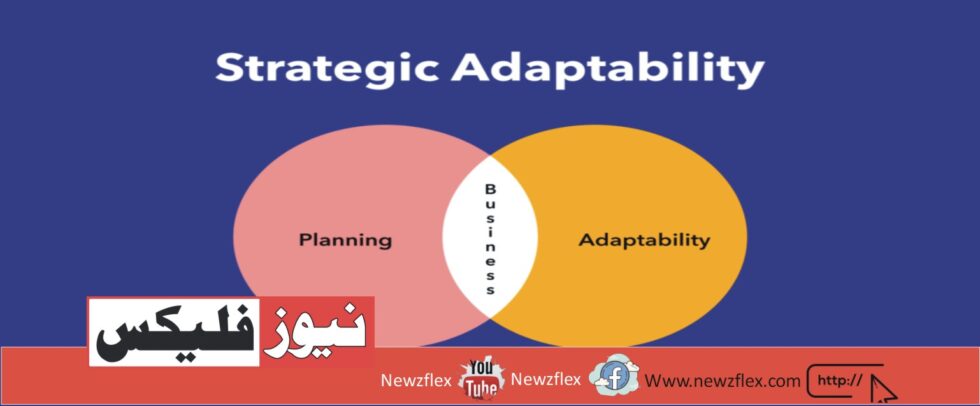
You’re facing shifting project demands. How can you maintain agility and adaptability?
Change is no longer the exception; it’s the new normal. Plans that once felt solid crumble overnight as new priorities emerge. So, how do you stay agile without losing focus? Many teams crumble under shifting demands because they think adaptability means endless flexibility.
But true agility isn’t about saying yes to everything—it’s about staying sharp, focused, and intentional. Let’s challenge the conventional thinking around change management.
Shifting demands can become your greatest strength if approached the right way. Here’s how to adapt and thrive, even when the ground keeps moving.
1. Question the Assumptions You Started With
Most projects fail to adjust because teams cling to initial assumptions. But the truth is, no plan survives unchanged. Holding on too tightly can create blind spots. Instead of fighting change, ask: “What has changed, and how should we respond?”
The faster you challenge outdated ideas, the faster you align with what matters now. Adaptability starts when you stop treating change like a threat and start treating it like an opportunity.
2. Prioritize Impact Over Busy Work
In times of shifting demands, there’s no room for tasks that don’t move the needle. Focus on what drives the most value, not what keeps people busy. Many teams exhaust themselves trying to do everything when priorities shift.
Cut back on non-essential work. Ask: “What’s the one thing we must get right, no matter what?” Focus your energy there. Agility isn’t about doing more—it’s about doing what matters most.
3. Anticipate Change Before It Happens
Agile teams don’t just react to change; they expect it. Build buffers into your timelines. Leave room for unknowns. Set checkpoints to reassess progress regularly instead of waiting for surprises to catch you off guard.
Thinking two steps ahead isn’t just for emergencies—it’s how smart teams survive. Shifting demands don’t feel as chaotic when you’re ready for them.
4. Say “No” Strategically
Not every new demand deserves your attention. The idea that every change request is equally urgent is a myth. True agility means learning when to say “no” to distractions disguised as priorities.
Ask yourself: “Will this change add value or create noise?” Teams that try to accommodate every shift end up diluting their efforts. Saying no to the wrong things creates space to focus on the right ones.
5. Involve Your Team in Redefining Goals
When priorities shift, leaders often make decisions behind closed doors. But that creates a disconnect with the team. Instead, involve your team early in the process of realigning goals. They bring insights you can’t see from the top.
Engaging the team in decision-making builds trust and ensures alignment. The more invested people are, the more agile they become. Shifting demands stop feeling like a burden when everyone feels they are part of the solution.
6. Embrace Iteration, Not Perfection
Trying to deliver a perfect solution in the face of constant change is a recipe for frustration. Instead, aim for progress through small, rapid iterations.
Deliver, learn, and adjust. The faster you release, the faster you understand what works. Adaptability isn’t about nailing it on the first try—it’s about moving forward, even when things aren’t perfect.
7. Expose the Hidden Cost of Over-Adapting
Here’s a truth many teams ignore: Constantly shifting gears without focus drains energy and morale. Agility doesn’t mean pivoting every time a new idea shows up. It’s about filtering out noise and staying committed to long-term goals while adapting where it matters.
Many projects derail not because they resist change, but because they over-adapt to every new request. The hidden cost? Burnout, missed deadlines, and lost purpose. True agility means striking the right balance—staying adaptable without becoming reactive.
8. Communicate Transparently with Stakeholders
When demands shift, uncertainty creeps in. It’s easy for teams to panic or feel out of sync. The key is clear, continuous communication with everyone involved—clients, stakeholders, and your team. Set realistic expectations upfront.
Keep people informed about what’s changing and why. When stakeholders understand the reasoning behind your decisions, they are more likely to trust the process. Transparency builds confidence, even in the face of uncertainty.
Agility Is a Mindset, Not a Method
Agility isn’t a checklist—it’s a way of thinking. It means letting go of rigid plans and embracing the unknown. The most agile teams see shifting demands as fuel for innovation, not obstacles to overcome. What’s stopping you from treating change as an opportunity?
By staying intentional, filtering out noise, and iterating quickly, you can not only adapt but also thrive. Agility isn’t just about surviving change—it’s about turning it into your competitive edge. For more thought-provoking content on how to stay sharp in a changing world, visit www.newzflex.com.
Embrace the shift. Stay intentional. Let every change refine your purpose, not derail it. The power lies not in avoiding change but in mastering it. What shift will you embrace today?
آپ کو پروجیکٹ کی مطالبات میں تبدیلی کا سامنا ہے۔ آپ چستی اور موافقت کو کیسے برقرار رکھ سکتے ہیں؟
تبدیلی اب استثناء نہیں رہی؛ یہ نیا معمول ہے۔ منصوبے جو کبھی مضبوط محسوس ہوتے تھے، راتوں رات ٹوٹ جاتے ہیں جب نئی ترجیحات ابھرتی ہیں۔ تو، آپ کس طرح چست رہ سکتے ہیں بغیر توجہ کھوئے؟ بہت سی ٹیمیں بدلتی ہوئی ضروریات کے سامنے کمزور ہو جاتی ہیں کیونکہ وہ سمجھتی ہیں کہ موافقت کا مطلب ہر چیز کے لیے لچکدار ہونا ہے۔
لیکن حقیقی چستی ہر چیز کے لیے ہاں کہنا نہیں ہے—یہ تیز، توجہ مرکوز، اور ارادی رہنے کے بارے میں ہے۔ آئیے تبدیلی کے انتظام کے بارے میں روایتی سوچ کو چیلنج کریں۔
اگر درست طریقے سے نزدیک کیا جائے تو بدلتی ہوئی ضروریات آپ کی سب سے بڑی طاقت بن سکتی ہیں۔ یہاں ہے کہ آپ کس طرح ڈھال سکتے ہیں اور کامیاب ہو سکتے ہیں، یہاں تک کہ جب زمین ہر وقت حرکت کر رہی ہو۔
نمبر1 : اپنے ابتدائی مفروضوں کو سوال میں ڈالیں
زیادہ تر منصوبے ایڈجسٹ ہونے میں ناکام رہتے ہیں کیونکہ ٹیمیں ابتدائی مفروضوں پر اڑ جاتی ہیں۔ لیکن حقیقت یہ ہے کہ کوئی منصوبہ بغیر تبدیلی کے زندہ نہیں رہتا۔ بہت مضبوطی سے پکڑنے سے اندھے مقامات پیدا ہو سکتے ہیں۔ تبدیلی سے لڑنے کے بجائے پوچھیں: کیا تبدیل ہوا ہے، اور ہمیں کس طرح جواب دینا چاہیے؟
جتنی جلدی آپ پرانی سوچ کو چیلنج کریں گے، اتنی ہی جلدی آپ اس بات کے ساتھ ہم آہنگ ہوں گے جو اب اہم ہے۔ موافقت اس وقت شروع ہوتی ہے جب آپ تبدیلی کو خطرے کی طرح دیکھنا بند کرتے ہیں اور اسے موقع کے طور پر دیکھنا شروع کرتے ہیں۔
نمبر2 : بہترین اثر کو ترجیح دیں، مصروفیت کو نہیں
بدلتی ہوئی ضروریات کے وقت، ایسے کاموں کے لیے جگہ نہیں ہے جو کوئی فرق نہیں ڈالتے۔ اس چیز پر توجہ مرکوز کریں جو سب سے زیادہ قیمت پیدا کرتی ہے، نہ کہ جو لوگوں کو مصروف رکھتی ہے۔ بہت سی ٹیمیں ہر چیز کرنے کی کوشش میں تھک جاتی ہیں جب ترجیحات بدلتی ہیں۔
غیر ضروری کاموں میں کمی کریں۔ پوچھیں: “ہمیں کیا چیز ٹھیک کرنی ہے، چاہے کچھ بھی ہو؟” اپنی توانائی کو وہاں مرکوز کریں۔ چستی کا مطلب زیادہ کرنا نہیں ہے—یہ اس بات پر ہے کہ سب سے زیادہ اہم چیزیں کریں۔
نمبر3 : تبدیلی کی پیشگی توقع کریں
چست ٹیمیں صرف تبدیلی کا جواب نہیں دیتیں؛ وہ اس کی توقع کرتی ہیں۔ اپنے ٹائم لائنز میں بفر شامل کریں۔ نامعلوم کے لیے جگہ چھوڑیں۔ باقاعدگی سے ترقی کا دوبارہ جائزہ لینے کے لیے چیک پوائنٹس مقرر کریں، بجائے اس کے کہ غیر متوقعات سے بچیں۔
دو قدم آگے سوچنا صرف ایمرجنسی کے لیے نہیں ہے—یہ ان طریقوں میں شامل ہے جس سے ہوشیار ٹیمیں زندہ رہتی ہیں۔ جب آپ تیار ہوں تو بدلتی ہوئی ضروریات اتنی ہی بے ترتیب محسوس نہیں ہوتیں۔
نمبر4 : اسٹریٹجک طور پر “نہیں” کہیں
ہر نئی ضرورت آپ کی توجہ کی حقدار نہیں ہوتی۔ یہ خیال کہ ہر تبدیلی کی درخواست اتنی ہی فوری ہے، ایک غلط فہمی ہے۔ حقیقی چستی کا مطلب یہ ہے کہ سیکھیں کب توجہ میں “نہیں” کہنا ہے۔
پوچھیں: “کیا یہ تبدیلی قیمت بڑھائے گی یا شور پیدا کرے گی؟” جو ٹیمیں ہر تبدیلی کو ایڈجسٹ کرنے کی کوشش کرتی ہیں، وہ اپنی کوششوں کو کمزور کر دیتی ہیں۔ غلط چیزوں کو چھوڑنا صحیح چیزوں پر توجہ مرکوز کرنے کی جگہ بناتا ہے۔
نمبر5 : اپنی ٹیم کو اہداف کی دوبارہ تعریف میں شامل کریں
جب ترجیحات تبدیل ہوتی ہیں، تو رہنما اکثر دروازے کے پیچھے فیصلے کرتے ہیں۔ لیکن یہ ٹیم کے ساتھ فاصلے پیدا کرتا ہے۔ اس کے بجائے، اپنی ٹیم کو اہداف کی دوبارہ ترتیب میں جلدی شامل کریں۔ وہ ایسی بصیرت لاتے ہیں جو آپ اوپر سے نہیں دیکھ سکتے۔
فیصلہ سازی میں ٹیم کو شامل کرنا اعتماد پیدا کرتا ہے اور ہم آہنگی کو یقینی بناتا ہے۔ جتنا زیادہ لوگ شامل ہوں گے، اتنا ہی زیادہ چست بنیں گے۔ بدلتی ہوئی ضروریات ایک بوجھ کی طرح محسوس نہیں ہوتی جب ہر کوئی محسوس کرتا ہے کہ وہ حل کا حصہ ہیں۔
نمبر6 : ترمیم کو قبول کریں، نہ کہ کامل ہونے کی کوشش کریں
تبدیلی کے سامنے ایک کامل حل فراہم کرنے کی کوشش مایوسی کا سبب بنتی ہے۔ اس کے بجائے، چھوٹے، تیز ترمیم کے ذریعے پیشرفت کی کوشش کریں۔
فراہم کریں، سیکھیں، اور ایڈجسٹ کریں۔ جتنی جلدی آپ جاری کرتے ہیں، اتنی ہی جلدی آپ سمجھتے ہیں کہ کیا کام کرتا ہے۔ موافقت کا مطلب یہ نہیں ہے کہ پہلے ہی کوشش میں سب کچھ ٹھیک کریں—یہ آگے بڑھنے کے بارے میں ہے، چاہے چیزیں کامل نہ ہوں۔
نمبر7 : زیادہ ایڈجسٹ کرنے کی پوشیدہ قیمت کو ظاہر کریں
یہ ایک حقیقت ہے جسے بہت سی ٹیمیں نظر انداز کرتی ہیں: توجہ کے بغیر مسلسل اپنی رفتار تبدیل کرنا توانائی اور حوصلے کو ختم کرتا ہے۔ چستی کا مطلب یہ نہیں ہے کہ ہر نئی آئیڈی کے سامنے جھکنا ہے۔ یہ شور کو فلٹر کرنا اور طویل مدتی مقاصد کے ساتھ ایڈجسٹ رہنا ہے جہاں یہ اہم ہے۔
بہت سے منصوبے ناکام نہیں ہوتے کیونکہ وہ تبدیلی سے انکار کرتے ہیں، بلکہ اس لیے کہ وہ ہر نئی درخواست کے سامنے زیادہ ایڈجسٹ ہو جاتے ہیں۔ پوشیدہ قیمت؟ تھکاوٹ، مہلت کی عدم ادائیگی، اور مقصد کا کھو جانا۔ حقیقی چستی کا مطلب صحیح توازن تلاش کرنا ہے—ایڈجسٹ رہنا بغیر جوابدہ بنے۔
نمبر8 : اسٹیک ہولڈرز کے ساتھ شفاف طور پر بات چیت کریں
جب مطالبات تبدیل ہوتے ہیں تو غیر یقینی صورتحال در آتی ہے۔ ٹیموں کے لیے یہ آسان ہے کہ وہ خوفزدہ ہوں یا ہم آہنگی محسوس نہ کریں۔ کلید یہ ہے کہ ہر شامل فرد کے ساتھ واضح، مسلسل بات چیت کریں—موکل، اسٹیک ہولڈرز، اور آپ کی ٹیم۔ شروع میں حقیقی توقعات طے کریں۔
لوگوں کو بتائیں کہ کیا تبدیل ہو رہا ہے اور کیوں۔ جب اسٹیک ہولڈرز آپ کے فیصلوں کے پیچھے کی منطق کو سمجھتے ہیں تو وہ عمل پر زیادہ اعتماد کرنے کے قابل ہوتے ہیں۔ شفافیت، غیر یقینی کے سامنے بھی، اعتماد کو بڑھاتی ہے۔
چستی ایک ذہنیت ہے، طریقہ کار نہیں
چستی کوئی چیک لسٹ نہیں ہے—یہ سوچنے کا ایک طریقہ ہے۔ اس کا مطلب سخت منصوبوں کو چھوڑنا اور نامعلوم کو اپنانا ہے۔ سب سے زیادہ چست ٹیمیں بدلتی ہوئی ضروریات کو اختراع کے ایندھن کے طور پر دیکھتی ہیں، نہ کہ رکاوٹوں کے طور پر۔ کیا چیز آپ کو تبدیلی کو موقع کے طور پر دیکھنے سے روکتی ہے؟
ارادے سے رہ کر، شور کو فلٹر کر کے، اور تیزی سے ایڈجسٹ کرتے ہوئے، آپ نہ صرف ڈھال سکتے ہیں بلکہ کامیاب بھی ہو سکتے ہیں۔ چستی صرف تبدیلی سے بچنے کا نام نہیں—یہ اسے آپ کی مسابقتی برتری میں تبدیل کرنے کے بارے میں ہے۔ مزید دلچسپ مواد کے لیے کہ آپ کس طرح ایک بدلتی دنیا میں چست رہ سکتے ہیں، نیوزفلیکس پر جائیں۔
تبدیلی کو قبول کریں۔ ارادی رہیں۔ ہر تبدیلی کو آپ کے مقصد کی وضاحت کرنے دیں، نہ کہ اسے بگاڑنے۔ طاقت اس میں نہیں ہے کہ تبدیلی سے بچیں بلکہ اسے مہارت سے استعمال کریں۔ آپ آج کس تبدیلی کو قبول کریں گے؟








